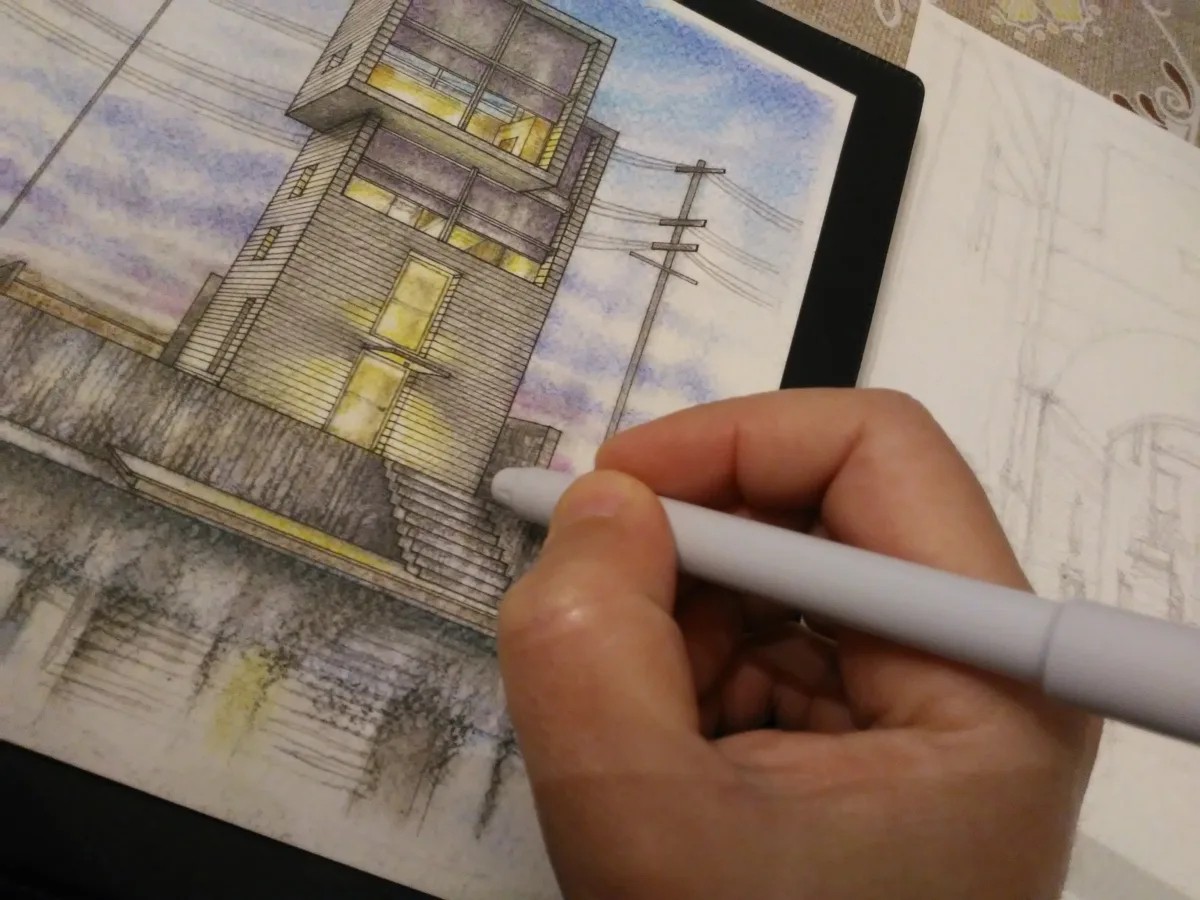In this article, we introduce some thoughts about the utility of drawing freehand and with traditional tools of the architecture and landscape illustration.
In architecture, urban planning, landscaping, interior design, and the related fields, projects can be represented graphically through hand drawing or digitally.
Traditionally, projects were created using only hand drawing. Today, in the architectural and design profession, hand drawing has been almost totally replaced by software that offers more speed and precision. However, hand drawing is still used during the design process to represent quick sketches of preliminary ideas, in the creation of aesthetic concepts, or in detailing studies of projects.
Although there is not much use of hand drawing, there will always be people who enjoy and practice free drawing. For lovers of this type of architectural representation, there is a niche to be developed: architecture and landscape illustration.
What is meant by architecture and landscape illustration
In principle, architecture and landscape illustration is a type of visual representation that has the purpose of expressing the idea of a project in a clear way, to clients and professionals in the field: architects, engineers, designers, and others involved in the construction project.
In this sense, illustrations can be used to show a variety of elements of the project or of the space already built, such as floor plans, facades, sections, and linear or axonometric perspectives. These drawings can help visualize the preliminary idea of the project or help make decisions and resolve questions of architectural composition and detailing.
A very popular form of representation in the field of architectural illustration is the linear perspective (conical projection) of projects, which is a replacement for computer renders. Figure 1 shows an example of perspective of an interior design project.

Is architecture and landscape illustration technical or artistic drawing?
Architectural illustration can be considered both a technical drawing and an artistic drawing, depending on what its specific use will be, the technique of realization, and the level of the drawing details.
In technical drawing, architectural illustration is used to represent the physical characteristics of a construction project, including measurements, materials, and construction details. It can be done in 2D (orthographic views that need to follow technical norms and standards) or in 3D (perspectives).
Figure 2 shows an example of an illustration for a construction detail, which can be considered technical, although it is freehand drawing.
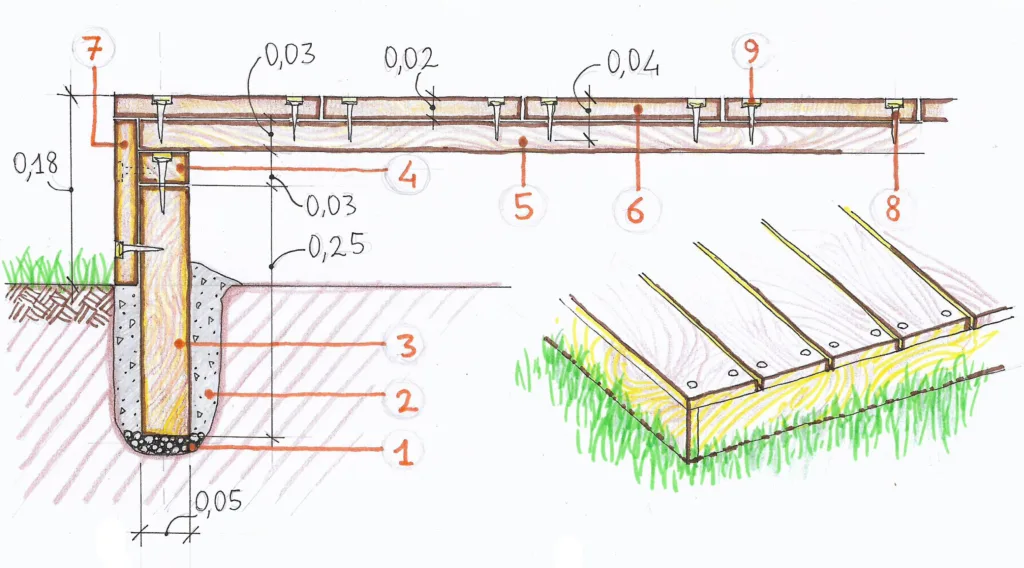
On the other way, the illustration of architecture and landscaping can be appreciated as an artistic drawing, especially when it is done by freehand. This is because using specific representation techniques, such as graphite, charcoal, watercolor, pastels (as in the example of figure 3), gives the drawing a more expressive and pictorial image, rather than a technical one. This artistic representation is used to express the atmosphere, the feeling, or the aesthetics of a designed space.
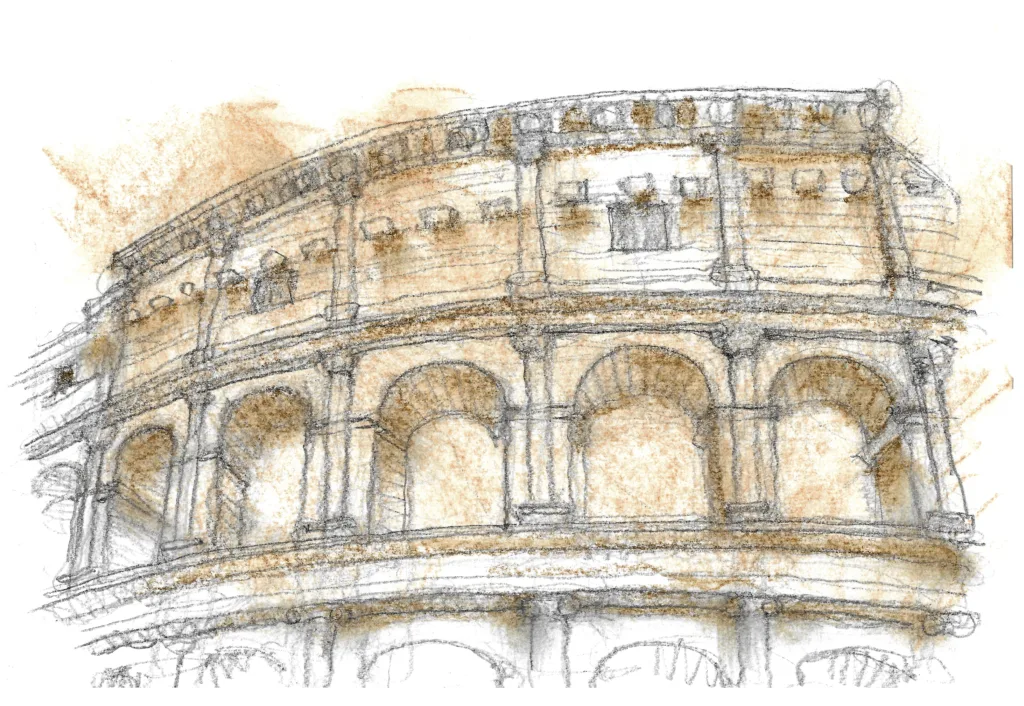
Integration between technical and artistic
Another way to visualize architecture and landscape illustration would be to integrate of these two categories (technical and artistic) in the same drawing. This can be done using a more precise and rigorous drawing, with an artistic effect of light and shadow of the surfaces, colors and textures of the materials.
Therefore, an example would be to make the perspective drawing with graphite and ink pen using setsquares, and to paint with watercolor or dry pastel, which are especially artistic techniques.
Another possibility is to create 2D technical drawings such as floor plans, sections, facades, and humanize the environments with material texture effects, projected shadows, and drawings of people placed in the project.
Also, another example could be to make the drawing in perspective with shading and semi-realistic textures, and to add the dimensions, as shown in the example of figure 4. In this work, the measurements were added using a computer software, but the drawing of this object was done entirely by hand.
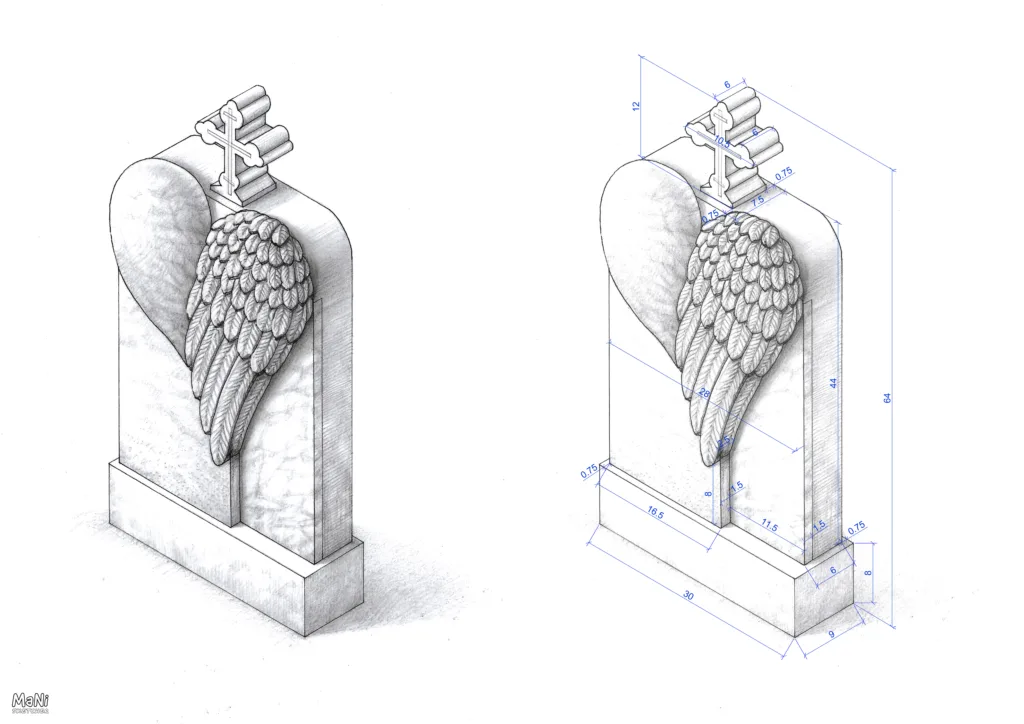
Differences between freehand and digital architectural illustration
Illustrations can be made with a variety of drawing techniques and tools:
First, freehand drawings with graphite, ink pens, watercolors, colored pencils, pastels and so on. The illustrator uses his manual skills to create drawings with a more technical or more artistic touch, and can give a personal style to the illustration.
Second, 2D digital drawing or 3D modeling and rendering techniques. In 2D digital illustration the illustrator uses a tablet, a mouse or a digital pen to create the drawings. This technique gives more control and precision, and offers features such as layers and easier adjustments. The layers can be used independently with more or less opacity and transparency. In 3D illustration, the illustrator need first create the model of the objects, according to the project’s measures and proportions. Then follows with the application of the material textures and indication of the lights, to generate the rendering images that can obtain a high visual level of realism.
Third, hybrid techniques integrating hand drawing with computer software. As the example in Figure 5 shows, the drawing was freehand with graphite pencil, and then colors, shadows and human figures were digitally added with 2D image editing software.

From these distinctions between freehand and digital techniques, we can understand that through freehand drawing it is possible to transmit a more organic feeling and an artistic atmosphere, with unique and recognizable lines and textures.
On the other way, digital illustration offers technical precision and the possibility to create more realistic or stylized images.
Objectives of architecture and landscape illustration with freehand drawing
With the use of freehand drawing in architectural and landscape design illustrations, the objective is to capture the essence of the project or the built environment and communicate the architect’s intention in a fresher and more subjective way. In this sense, illustrations can have the following objectives:
1 – Create images that give shape to new concepts of architecture, design, landscapes, etc., through freehand sketches, in a fast and flexible way. These conceptual sketches have a strong expressivity and a high power of communication of ideas and solutions of composition, shapes and colors.
2 – To promote the historical and cultural heritage with graphic documentation. Drawings also have historical value and can be used to capture important moments, preserving the specific vision of the architect or illustrator, as the example in Figure 6.
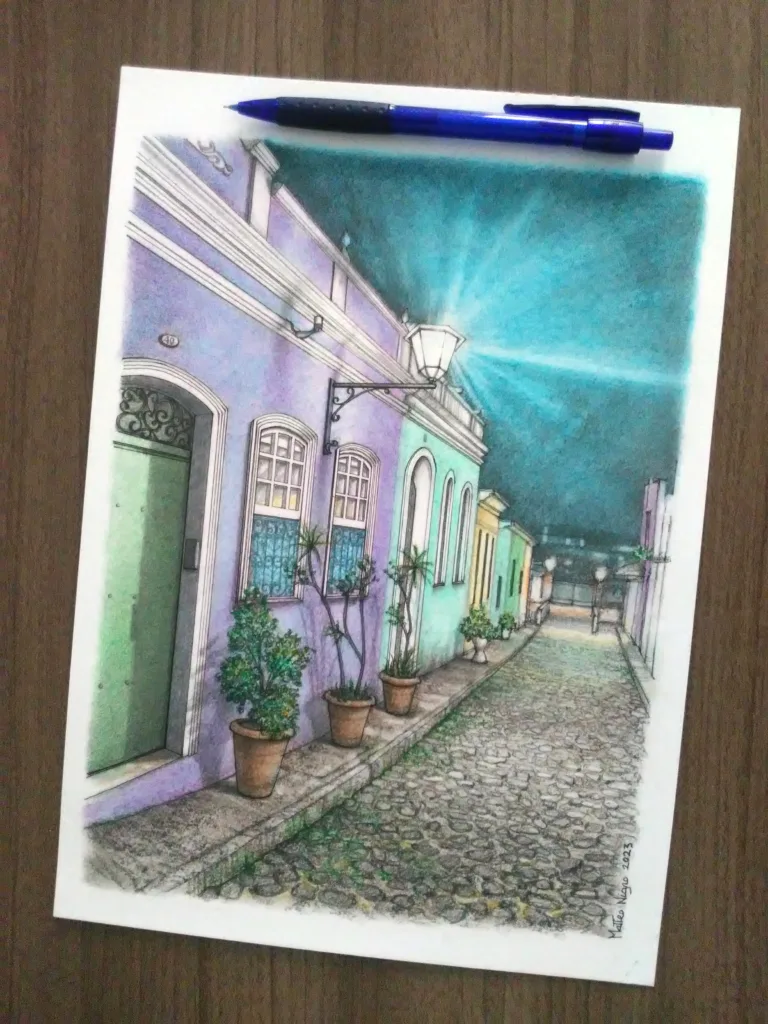
3 – Introduce images for advertising and selling products (projects) to potential clients and investors. Through the technique of hand drawing, architectural and landscape illustrations, differentiate themselves from most digital rendered images, transmitting a vision of project, a projectual process sensible to changes, arousing emotions and involving people in a more impactful way than a cold technical representation.
Benefits of illustration with freehand drawing for architecture
Hand-drawn architecture and landscape design illustrations have a number of benefits, such as:
Illustrators can express their creativity in a unique way, reflecting their individual style in the drawing.
Next, freehand drawing is a fast and efficient form of visual communication, especially for representing design ideas. It can be practiced anywhere with agility and versatility, and does not need digital tools.
In addition, this type of illustration can create a closer connection with the client, because it has a more human aspect that can make it easier for people to identify with the project. This is because the organic and expressive lines create a visual atmosphere that transmits emotions and sensations in a more involving way than a photograph or a digital rendering.
Moreover, freehand illustration provides more experimentation with architectural and design techniques and solutions, helping to create new forms and spatial proportions more quickly and intuitively.
Finally, we can conclude that the architecture and landscape illustration with hand drawing features an artistic beauty of environments and objects, which in reality go unobserved or unappreciated. Therefore, drawing fragments of buildings or landscapes with a sensible eye also means valuing the existing heritage, realizing its richness of details and beauty.
Learn here about the work of Eduardo Bajzek, the greatest architectural illustrator in Brazil.
Let me know in the comments what you think about this theme of architecture and landscape illustration with hand drawing.

